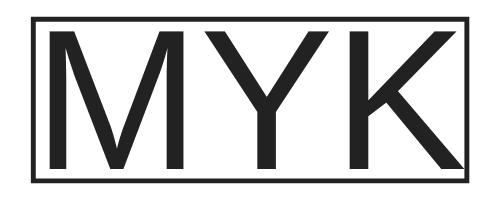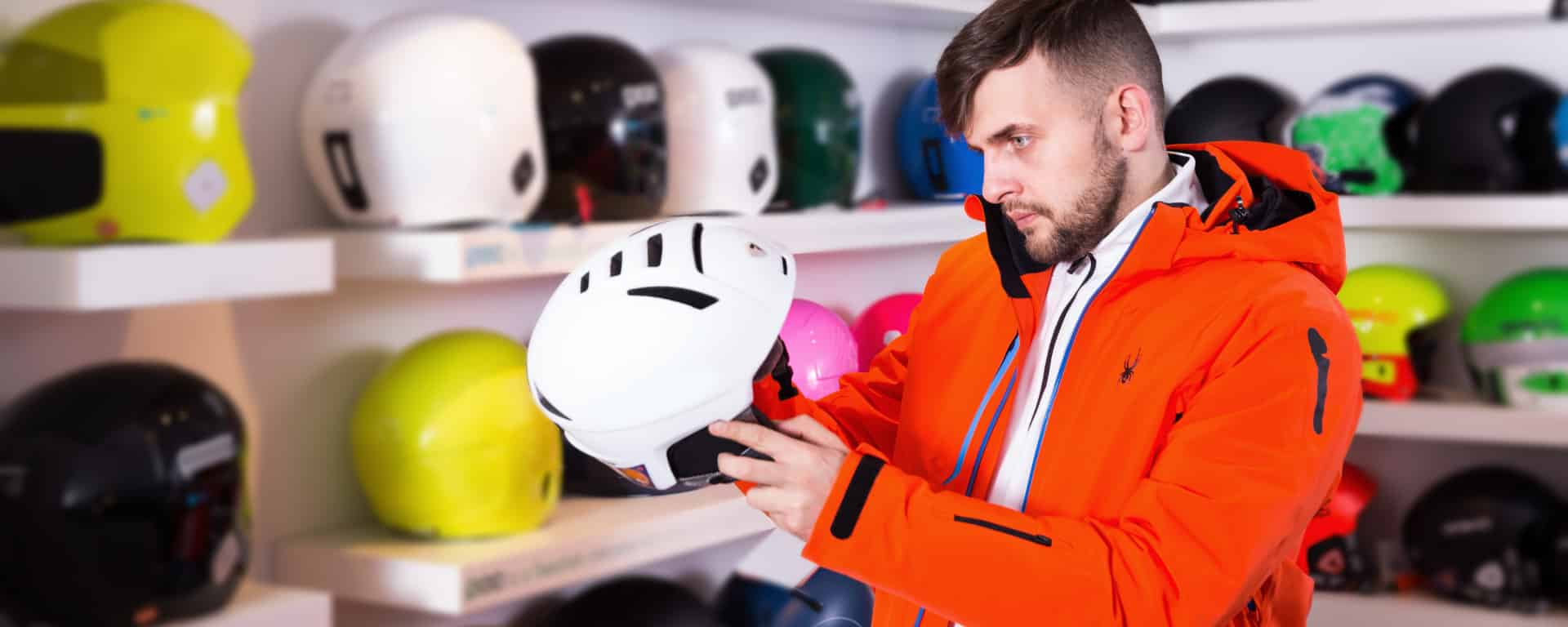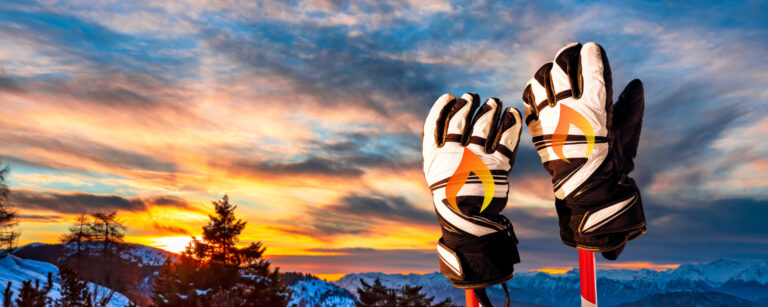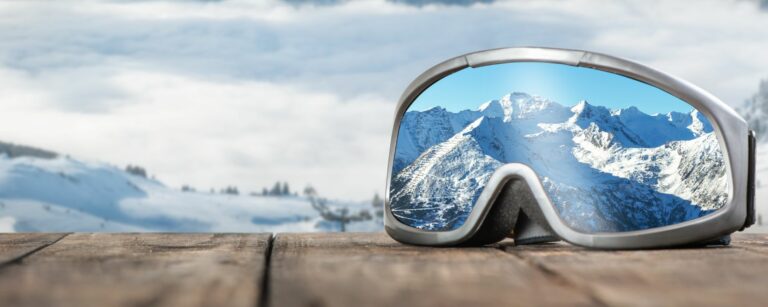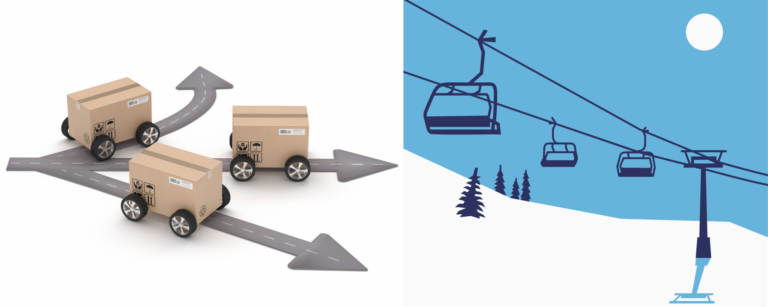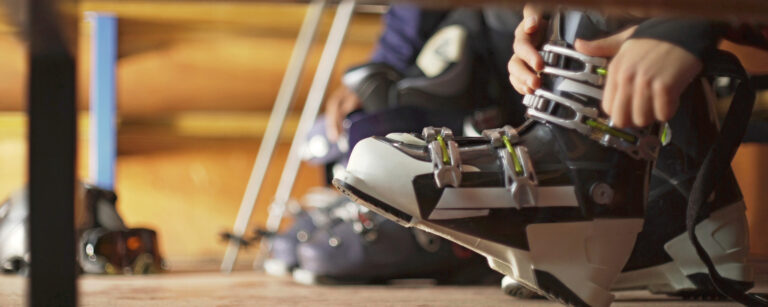How to Buy a Ski Helmet – Essential Tips
I have always worn a ski helmet; my parents insisted on it. And I’m not talking after helmets became fashionable.
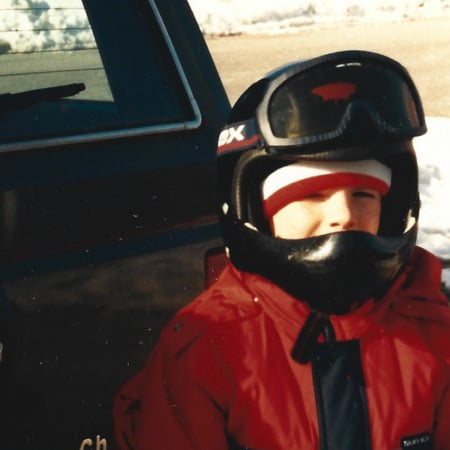
I’m talking about the 1980s when we used to wear skin-tight race pants, and everything was fluorescent.
I looked like I was riding a motorcycle, but damn, did I ever think I was cool.
Ski and snowboard helmets have come a long way since I was a kid. They’re lighter, safer, and surprisingly stylish.
This guide will show you everything you need to know about how to buy a ski helmet. What to consider, how to choose the right size, and what features are essential.
But why listen to my advice? Aside from thinking I looked incredible in the 80s, I have been a ski instructor for over 25 years. I ski, snowboard, and telemark. I teach hundreds of students a year, from 3-year-olds learning to put their boots on to backcountry tours. Part of my job is keeping my students safe on the hill; their gear is a big part.
How to Buy a Ski Helmet
Below are the factors I consider when buying ski and snowboard helmets. You can read through all the details or skip to the end to find out what I recommend looking for in snow helmets.
- Style
- Construction
- Safety
- Features
- Fit
1 – Style
The first thing to know about helmets is that they come in three styles – full shell, half shell, and full face.
Full shell

A full-shell helmet offers the most protection and coverage. It wraps around your head completely, covering your entire face, neck, and temples.
They often have limited ventilation and sizing adjustment.
Most skiers and boarders only wear full-shell helmets if they race.
Half shell

Half-shell helmets combine a shell with soft ear pads. They are more comfortable than a full shell, have more ventilation, and are easy to take on and off.
These helmets provide good coverage but less than full-shell helmets.
Full Face
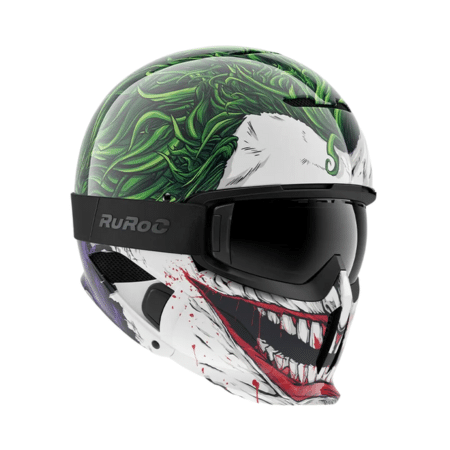
These helmets used to be more common (see my picture as a kid above). Racers used them in slalom courses. Full-shell helmets have replaced them with an attachable chin bar.
Ruroc makes a full-face helmet that makes you look like a stormtrooper. Reviews are divided between people who love it and those that think it’s for Jerries.
My Recommendation
If you race or love the Ruroc, buy a half-shell style helmet. The comfort level and ventilation outweigh the increased protection of a full shell.
2 – Construction
Helmets consist of three distinct parts – the shell, the impact liner, and the fit system.
Shell
The outer shell is made from various materials, including ABS plastic, fiberglass, carbon fiber, or Kevlar. The shell protects from sharp objects like sticks or rocks that may hit your head while skiing.
ABS is the least expensive and provides a good balance of durability, weight, and cost.
- Hard Shell/ABS: This type of helmet has an outer shell of acrylonitrile butadiene styrene (ABS) and a foam liner. It is durable and suitable for aggressive skiers who want maximum protection.
- In-Mold: In-mold helmets have a thin outer shell fused with the foam liner during manufacturing. They are lighter and provide good ventilation, making them a popular choice for recreational skiers.
- Hybrid In-Mold: This type of helmet combines the benefits of a hard shell and in-mold. It has a hard shell on the top and an in-mold construction on the sides and back, providing good protection and ventilation.
- Soft Shell/EPP: Softshell helmets have a flexible outer shell of expanded polypropylene (EPP) foam. They are lightweight and comfortable, making them popular for backcountry skiers and snowboarders.
Impact Liner
The impact liner is the most crucial part. It’s usually made from an expanded polystyrene called EPS foam. The EPS foam absorbs the energy from an impact and keeps it away from your head.
Over time, the EPS can break down and become less effective as you ski in the helmet. This is why replacing snow helmets every 3-4 years is essential.
Fit System
Most helmets combine pad systems, removable pads, an adjustable harness, and a chin strap that ensures the helmet fits properly.
My Recommendation
If you purchase a helmet with proper safety certifications, the construction is more about personal preference.
I’m not hucking giant cliffs, and my biggest injury chance is hitting a tree (yes, I have hit a tree before). I prefer a lighter helmet with lots of ventilation. (I ski hard and sweat a lot) and would choose a hybrid in-mold helmet with a fit system.
3 – Helmet Safety
Ski snowboard helmet safety boils down to certifications and technology. Most countries have some form of accreditation, like ASTM in the US, that tests most helmets for impact protection. It’s essential to look for these certifications and ensure your helmet is certified for skiing or snowboarding.
Certifications
There are two certifications to consider when buying a ski helmet: ASTM and EN 1077.
- ASTM F2040: This is the most common certification for ski helmets. It is a U.S.-based standard that covers non-motorized recreational snow sports helmets. Helmets that meet this certification have passed specific impact and retention system tests.
- EN 1077: is a European certification for alpine skiing and snowboarding helmets. It ensures that helmets meet safety requirements for impact protection and retention systems.
MIPS
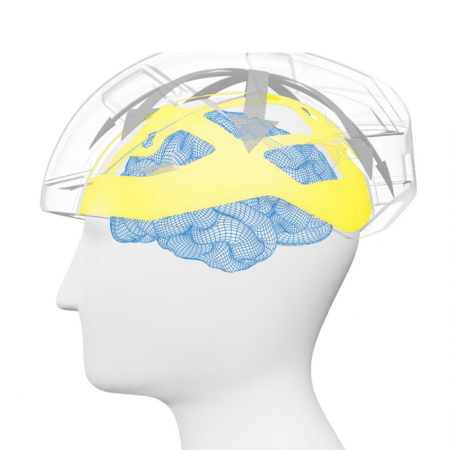
MIPS (Multi-directional Impact Protection System) was introduced in 2016 as a new technology to improve ski snowboard helmet safety.
Studies have shown that rotational injuries from side impacts cause more brain injuries. National Library of Medicine
MIPS reduces the rotational forces on the brain by using a low friction layer between the helmet and the head.
What does this mean? In a crash, the liner and the shell don’t move together. Which means your head and brain don’t move as much or as quickly.
Other Safety Technology
- Scott D30 Foam: dampens low energy impacts more efficiently than EPS foam.
- Shred RES (Rotational Energy System): Their version of MIPS.
- Shred Casidion Foam: self-healing foam with carbon nanostructures that dissipate impact energy more efficiently.
- POC SPIN (Shearing Pads INside): their version of MIPS
- Atomic AMID (Atomic Multi-directional Impact Deflector): dual-density foam fixed to the helmet’s core that is free to move in all directions. (MIPS alternative)
As you can see, there has been much advancement in rotational impact safety and improved foam. This and multi-impact resistant helmets have been the industry’s focus for some time.
My Recommendation
The whole purpose of a ski snowboard helmet is safety. I have worn a MIPS ski helmet for 3-4 years now and highly recommend MIPS or one of its competitors. The research and technology sound legitimate and are value-added.
4 – Helmet Features
Now for all the bells and whistles. What features do you want your helmet to have? Below is a list of some considerations:
- Adjustable Vents: Adjustable vents are a must. Temperature control is vital to stay happy on the hill all day.
- Goggle Clip: Helmets without goggle clips are a real pain. The goggle strap slides up and off the helmet constantly.
- Headphones Compatible: This is a great way to do it if you like to listen to tunes on the hill. Much better than annoying your lift mates with a Bluetooth speaker (please, please don’t do this!)
- Helmet Goggle Fit: Avoid the goggle gap and stay happier on the hill. Choose your goggles and helmet together, or buy both from the same brand.
- Removable liner: removable equals washable; need I say more?
- Visor System: Despite wearing glasses, I’ve always preferred these. However, A fellow instructor bought one and told me he loved it. I like prescription inserts in my goggles.
- Fit system: Most helmets have a fit system that helps you adjust the size. This is an absolute must!
My Recommendation
Some of this is personal preference, but I have found the following features make a difference for my students on the hill:
- Adjustable vents
- Goggle clip
- Helmet goggle fit
- Removable liner
- Fit system
These features come standard on most helmets.
5 – Helmet Fit
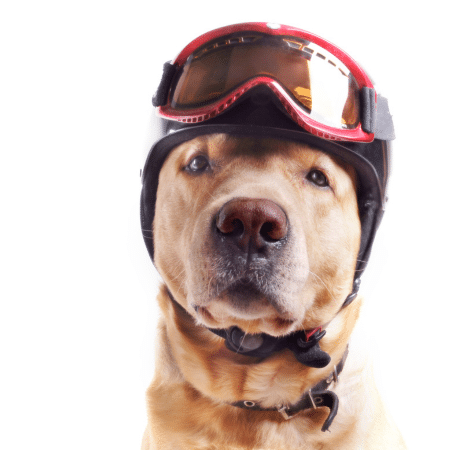
I can’t count the times I’ve seen people with improperly sized helmets. If the helmet doesn’t fit properly, it won’t protect you.
When you put the helmet on your head and tighten the fit system, it should be snug enough to move with your head but not so tight that you feel pressure.
DO NOT WEAR A HAT UNDER YOUR HELMET
I bolded that on purpose; this is a huge pet peeve of mine. When you add a hat underneath the helmet, it no longer fits properly and increases your chances of getting hurt.
Helmets keep you warm; you don’t need a hat.
If you absolutely must wear something under your helmet, buy a beenie!
Key Points
- The helmet should be snug but not tight (your head and helmet should move together if you shake your head)
- The helmet should cover your temples and the base of your skull (but not touch the back of your head.
The chin strap should be snug but not too tight.
The helmet should protect your head and not fall off if you hit the snow!
Measuring Your Size
Use a soft tape measure and wrap it around your head above your eyebrows and ears, roughly in the middle of your forehead. You can also use a string and measure it afterward.
Most helmets measure size in cm and have a range (55cm – 58cm, for example). You want your measurement to be in the middle of the range.
Ski snowboard helmet manufacturers often overlap the ranges, so consider sizing up if you are on the high end of one size.
Check The Fit
Position the helmet on your head so the front aligns with your eyebrows. Then, put the chin strap on. A snug fit is essential; a properly fitting helmet should have no gaps between the lining and your head. Make sure the back of the helmet does not touch the back of your neck.
Once your helmet is on, shake your head gently;
If the helmet moves independently from your head, it’s too big.
If you’re feeling pressure, or the helmet doesn’t fit on your head, it’s too small.
My Recommendation
Aside from aesthetics, this is what I look for in a helmet:
- Half-Shell
- Hybrid in-mold
- ASTM F2040 or EN 1077 certification
- MIPS or equivalent
- Adjustable vents
- Goggle clip
- Removable liner
- Fit system
The other factors I would consider are how the goggles fit up against the helmet, both for the goggle gap and for snow. I want the helmet to cover the top foam on the goggles so that the goggles don’t fog up.
I have mixed feelings about having a brim on the helmet. It’s excellent for preventing snow, but they are often too big and cause problems if you want to put your goggles on top of your helmet.
FAQ
How do you measure for a ski helmet?
You’ll need to wrap a flexible tape measure around the widest part of your head, about an inch above your eyebrows. This measurement in centimeters is your helmet size.
Is there a difference between men’s and women’s snow helmets?
Generally, the main differences are aesthetic, with varying colors and designs. However, some women’s ski helmets may be slightly smaller or lighter than men’s models.
Is there a difference between Ski and Snowboard Helmets?
No, there is no difference between a ski or snowboard helmet.
What is the difference between freestyle and all-mountain helmets?
All-mountain helmets focus on comfort and ventilation for long rides, while freestyle ones have extra padding and protection for jumps and tricks.
What is ASTM F2040?
This refers to the American Society for Testing Materials standard specification for a non-motorized recreational snow helmet – it ensures they meet safety standards.
Conclusion
When it comes to buying a ski helmet, there are many factors to consider. Make sure you buy one that is the right size for your head and has the necessary safety features.
Also, consider extra features like adjustable vents, goggle clips, and removable liners if needed. Hopefully, this guide has given you useful tips on finding the perfect helmet for your needs.
See you on the slopes!
